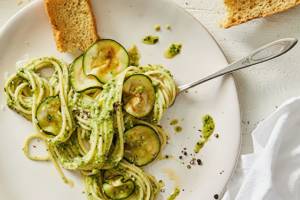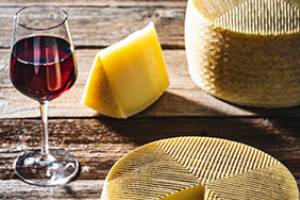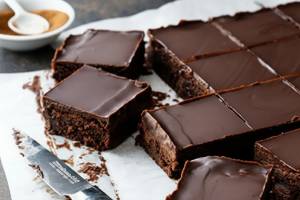
 Paella is all about making the most of the ingredients that are readily available. Photo courtesy Kyle Books. Paella is all about making the most of the ingredients that are readily available. Photo courtesy Kyle Books.
May 2010 |
 |
Spanish Paella Recipe
With Rabbit & Chicken
This recipe is from Chef José Pizarro’s Seasonal Spanish Food (read the review), a conversational-style cookbook that will teach you how to shop and prepare Spanish cuisine seasonally. Paella is a year-round dish, but the ingredients change seasonally. In autumn, it will probably include
mushrooms; in winter, turnips, pork ribs and sausages could be added; spring will see vegetables
such as asparagus and artichokes included; and in summer, especially during July and August, snails
are a favorite.
Spanish Paella With Rabbit & Chicken
Paella is all about making the most of the ingredients that are readily available. The thing to remember
is that paella originated as a farm workers’ lunch. It should be simple, robustly flavored and cooked
over an open fire. This recipe calls for vine trimmings for kindling, the aromatic smoke subtly
flavoring the rice. Even more important than the meat and vegetables is the stock; if you don’t have
homemade, flavorful stock, think of something else to make.
The other thing to mention is that if you are going to make paella with any degree of regularity, it is
worth buying a paella pan. The trick behind achieving rice that has absorbed all the stock, but hasn’t
overcooked, is to make sure that all the rice cooks evenly. To do this, the rice has to be spread in a thin
layer over a pan that is capable of transmitting heat evenly across its entire base.
For lots of first-timers, making sure that the rice cooks properly is a slightly scary prospect. If the rice has cooked but there is still liquid (i.e., you added too much stock
in the first place), spoon off the excess. Conversely, if the paella has simmered dry but the rice isn’t
ready, you can always add more stock. So, if you are a paella novice, have a small pan of boiling stock
ready toward the end of the cooking time.
This recipe includes several varieties of fresh beans special to the Valencia area: firstly, the
garrofó, which is like a fava bean; then, a small white bean called tavella, akin to a fresh green bean; and
lastly, a flat green bean called ferraúra, which is similar to the Italian flat bean available in the US.
Recipe yields 6 servings.
Ingredients
- A 1-pound chicken, jointed into
approximately 6 pieces
- A 1-pound rabbit, jointed into
approximately 6 pieces
- Salt and freshly ground
black pepper
- 4 tablespoons extra virgin
olive oil
- 2 garlic cloves, sliced
- 2 ripe tomatoes, chopped
- 2 teaspoons Spanish smoked
paprika (mild)
- 7 ounces fava beans
- 7 ounces thin green beans
(or omit and double the
quantity of flat beans)
- 7 ounces flat green beans, sliced
into 1-1/2 inch lengths
- 1-1/2 quarts chicken stock,
warmed
- 1 pinch saffron (approximately
20 threads), soaked in
2 tablespoons hot water
- 2 cups paella rice, such as
Calasparra or Aborio
Preparation
- Season the chicken and rabbit with salt.
- Take a large frying pan or 18-inch paella pan, and heat the oil over a medium-high heat. Cook the meat for seven minutes, or until the pieces are browned.
- Reduce the heat and add the garlic and tomatoes to the pan, then stir in the paprika (adding the spice last improves the flavor of the tomatoes).
- Sauté for two minutes before adding the various types of beans. Season with salt and pepper.
- Pour in the stock, bring everything to a simmer and let cook for about 10 minutes. Add the saffron water, give it a good stir and then turn the heat up to high and scatter the rice across the whole of the pan.
- Stir the rice to make sure it is evenly distributed, and then leave uncovered for 10 minutes.
- After 10 minutes, reduce the heat to low and cook for another eight minutes until the rice is al punto, or still has a little bite to it.
- Remove the paella from the heat and cover with paper towels or a kitchen towel. Let rest for five minutes before serving.
Content © copyright José Pizarro. All rights reserved. Additional content
Lifestyle Direct Direct, Inc. All rights reserved. Images are the copyright of their respective owners.

|




 Paella is all about making the most of the ingredients that are readily available. Photo courtesy Kyle Books.
Paella is all about making the most of the ingredients that are readily available. Photo courtesy Kyle Books.